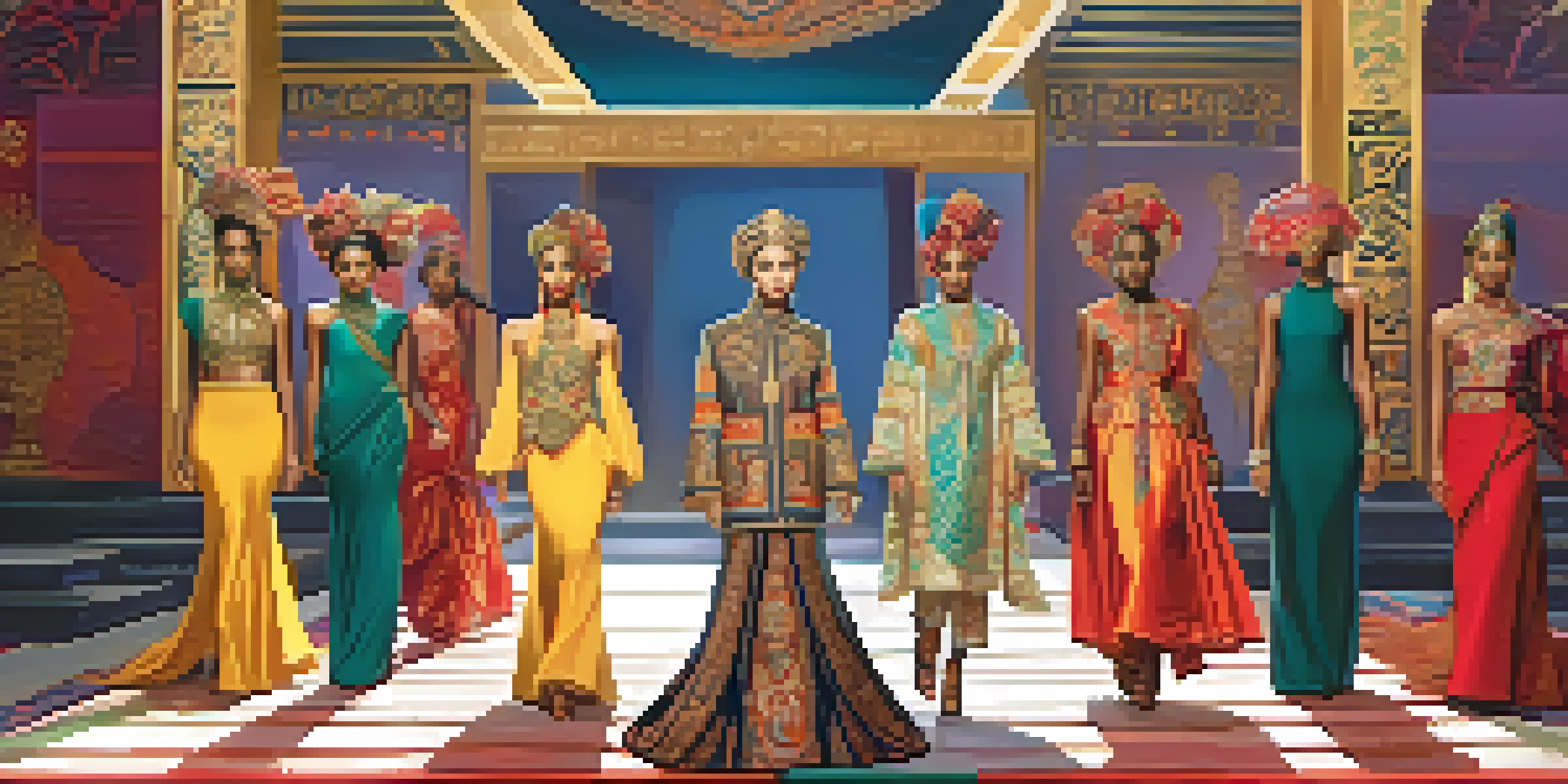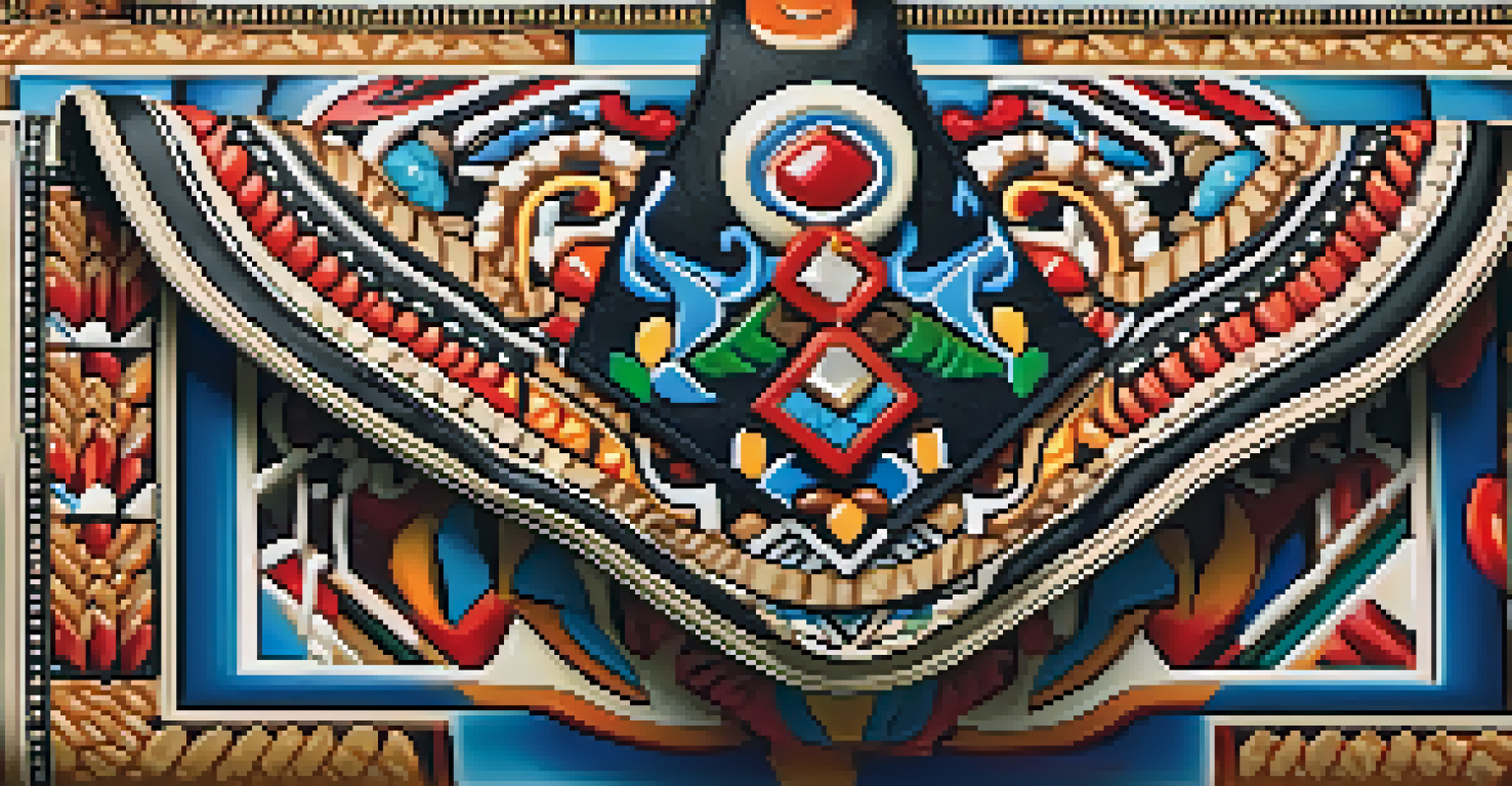Luxury Brands Embracing Cultural Heritage in Their Designs

The Rise of Cultural Heritage in Fashion
In recent years, luxury brands have increasingly turned to cultural heritage as a source of inspiration for their designs. This shift not only reflects a growing appreciation for global traditions but also aims to resonate with a diverse clientele. As consumers become more conscious of the stories behind their purchases, brands are finding value in showcasing authentic cultural narratives.
Fashion is the armor to survive the reality of everyday life.
Take Gucci, for example. Their collections often incorporate motifs and techniques from various cultures, creating a rich tapestry that tells stories beyond mere aesthetics. By doing so, they not only celebrate these cultures but also attract customers who cherish this depth of meaning in their fashion choices.
This trend signifies a broader movement within the luxury sector, where brands are embracing their social responsibility. By honoring cultural heritage, they contribute to the preservation of traditional crafts and promote sustainability, which resonates with today's ethically-minded consumers.
Balenciaga: A Nod to Traditional Craftsmanship
Balenciaga has made waves in the luxury fashion world by integrating traditional craftsmanship into its contemporary designs. This approach not only enriches the brand's offerings but also pays homage to artisans who have honed their skills over generations. The result is a perfect marriage of old-world techniques and modern aesthetics.

For instance, their use of intricate embroidery and hand-weaving reflects a commitment to craftsmanship that many luxury consumers now seek. These elements add uniqueness to each piece, ensuring that they stand out in a crowded market. By doing so, Balenciaga creates not just clothing but wearable art that tells a story.
Cultural Heritage in Fashion
Luxury brands are increasingly drawing inspiration from cultural heritage, resonating with consumers who value authentic narratives behind their purchases.
Moreover, this blend of tradition and innovation allows Balenciaga to appeal to a new generation of consumers who prioritize authenticity. As they wear these pieces, customers become ambassadors of cultural appreciation, showcasing the importance of heritage in a modern context.
Dior: Incorporating Global Influences
Dior has long been known for its elegant designs, but the brand has recently begun to weave global influences into its collections. By embracing cultural motifs from various parts of the world, Dior pays tribute to the rich tapestry of global fashion. This strategy not only enhances their design aesthetic but also enriches the brand's narrative.
Style is a way to say who you are without having to speak.
A prime example is the incorporation of African prints and patterns into their recent collections. This fusion not only introduces new colors and textures but also celebrates the artistry of African culture. It allows Dior to connect with a broader audience and highlight the beauty of cultural diversity.
By embracing these influences, Dior showcases the idea that fashion is a universal language. Each piece becomes a conversation starter, inviting wearers to explore and appreciate the stories behind the designs, thus fostering a greater understanding of different cultures.
Chanel: Reviving Traditional Techniques
Chanel has made a significant impact by reviving traditional techniques in its collections. The brand often looks back to its roots, drawing inspiration from the craftsmanship that defined its early years. This revival not only pays homage to Chanel's legacy but also emphasizes the importance of preserving artisanal skills.
For example, their use of tweed and hand-stitched embellishments showcases the meticulous work of skilled artisans. This attention to detail not only elevates the garments but also connects the brand to its rich history. It reminds consumers that luxury is not just about exclusivity but also about the artistry behind each piece.
Embracing Traditional Craftsmanship
Brands like Balenciaga and Chanel are reviving traditional techniques, blending them with modern aesthetics to create unique, story-rich pieces.
By focusing on traditional techniques, Chanel reinforces the idea that true luxury is timeless. In doing so, they encourage consumers to value craftsmanship and the stories that accompany each garment, fostering a deeper connection between the brand and its clientele.
Louis Vuitton: Celebrating Indigenous Cultures
Louis Vuitton has taken strides to celebrate indigenous cultures through its designs, showcasing the beauty and diversity of global heritage. By collaborating with artists from various backgrounds, they create collections that are rich in cultural significance. This initiative not only promotes these artists but also educates consumers about their heritage.
A notable example is their collaboration with Māori artists, where traditional motifs are integrated into modern luxury pieces. Such collaborations elevate the brand's narrative and offer a platform for indigenous voices to be heard. It demonstrates how luxury fashion can serve as a medium for cultural expression and appreciation.
Through these efforts, Louis Vuitton encourages a dialogue about cultural heritage and its relevance in contemporary fashion. By wearing these pieces, consumers engage in a cultural exchange, promoting understanding and respect for diverse traditions.
Fendi: A Fusion of Modernity and Tradition
Fendi has embraced the fusion of modernity and tradition, creating designs that resonate with a contemporary audience while honoring their cultural roots. Their collections often feature traditional Italian craftsmanship, seamlessly blended with innovative designs. This unique approach allows the brand to stand out in a competitive market.
For instance, Fendi's use of fur and leather in innovative ways showcases the skill of Italian artisans while appealing to modern sensibilities. This balance between past and present enhances the brand's identity and offers consumers a sense of exclusivity. Each piece becomes a testament to the craftsmanship that has defined Fendi for decades.
Future of Fashion: Inclusivity
The future of luxury fashion focuses on cultural appreciation, fostering connections and emotional bonds through meaningful storytelling.
By promoting this fusion, Fendi not only preserves traditional techniques but also pushes the boundaries of fashion. They invite consumers to experience luxury in a way that respects heritage while celebrating innovation, creating a unique narrative that engages and inspires.
The Future of Luxury: Cultural Appreciation
As luxury brands continue to embrace cultural heritage, the future of fashion looks promising. This movement signifies a shift towards greater inclusivity and appreciation for diversity in the industry. It encourages brands to tell stories that resonate with a global audience, fostering connections that go beyond mere consumerism.
Moreover, this trend reflects a growing demand from consumers for authentic and meaningful products. Brands that prioritize cultural appreciation are likely to thrive in this evolving landscape, as they build loyal customer bases that value storytelling and heritage. It’s about creating an emotional bond through shared narratives.

Ultimately, the future of luxury lies in its ability to evolve while respecting the past. By continuing to celebrate cultural heritage in their designs, brands will not only enhance their identity but also contribute to a more inclusive and understanding world.